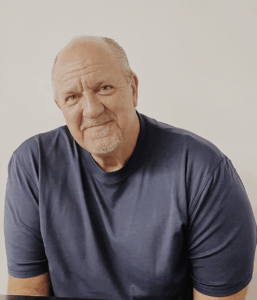In the early ’90s, during the Gulf War, dealerships faced significant challenges, and not all adapted to the changing market. Rohrich Toyota in Pittsburgh, however, saw a modest increase in unit sales (50 to 75 cars) even as others in the area saw declines. Though the numbers were small, it marked a remarkable turnaround, moving them from near the bottom of their district to near the top.
At the heart of this success was the implementation of a Business Development Center (BDC), a concept that many dealers initially misunderstood. A BDC was designed as a powerful tool for driving predictable showroom traffic through scheduled appointments.
The adoption of this model varied. Some dealers embraced it quickly, while others came around only after seeing the tangible results of improved sales, happier staff, and lower turnover.
The Evolution of BDC Adoption
The first BDC system was DOS-based, and everything was done by phone with manual data entry. Despite the challenges, the focus was on training and integrating customer-centric software to improve processes.
The BDC model continuously evolved, always keeping the customer at the center, focusing on training first, then adding software to track data. It eventually became a complete ecosystem with data insights, management resources, and a “BD college” for managers.
Top-performing Dealerships Use the BDC Model
High performers excel at both clarity and execution. They steer clear of what Bobb Biehl called “the three big pitfalls of leadership” which are fog, fatigue, and flirtations.
Fog represents a lack of clarity. Without clarity, progress slows, and your team can’t move forward effectively. Fatigue sets in when you’re overworked and begin cutting corners, compromising quality. Flirtations are distractions. Whether moral lapses or chasing random ideas that don’t align with your core goals.
Top-performing stores eliminate confusion by clearly defining goals and metrics. For a service BDC, these include things like calls answered, appointments set, show rates, and more. They view these interactions not as costs, but as investments in customer experience and revenue.
Balancing People, Process, and Technology
You need both alignment and a willingness to change. About 25 percent of people are “change-friendly,” 50 percent are on the fence, and 25 percent are “resistors.” Focus on empowering that 25 percent who are eager to embrace change, and the 50 percent on the fence will follow their lead. If you can align 75 percent of your team, you’ll achieve incredible results.
The best stores commit to change from the top down. The GM sets the tone, the service manager tracks key metrics, and the software monitors real-time performance. Winning dealerships foster a culture of accountability and continuous development.
Technology Gaps in Fixed Ops and BDCs
Integration is crucial. Many stores have separate CRMs, scheduling tools, and DMS data that don’t communicate, creating friction for both employees and customers.
Real-time analytics are another major gap. Without immediate visibility, a store might not know how many calls convert to appointments or why customers won’t wait two weeks. If 20 customers say they can’t wait, that’s a clear opportunity to pivot, perhaps by offering pickup service or expanding capacity. Without real-time data, you’re just guessing.
Maximizing ROI in 2025: Focus Areas for Dealerships
Double down on fixed operations. It’s the highest-margin part of the business, especially for used-car operations that handle reconditioning and similar services. Reduce wait times, optimize scheduling, and upsell responsibly. Investing in learning and development is also key.
A well-trained team can turn a $50 oil change into a $400 maintenance visit, all without making customers feel taken advantage of.
Lastly, don’t overlook outsourcing for certain roles if it’s more cost-effective. Look at how JM&A is rolling out virtual F&I for stores that can’t support a full-time manager. The same logic applies to BDC. Sometimes, as Peter Drucker put it, “selling the mailroom” is the smart move. Focus on your core strengths and outsource the rest to specialists who can do it more efficiently.
Related Stories:


 John Traver invented the original Business Development Center for the automobile industry in 1991. After a successful sale to Reynolds and Reynolds, he founded and became CEO of Traver Connect, a complete suite of solutions for automobile dealerships to convert BDC leads into sales and to maximize retail and service-lane opportunities. When it comes to running a successful BDC department, experience matters. Yours. Ours. Theirs. John can be reached at
John Traver invented the original Business Development Center for the automobile industry in 1991. After a successful sale to Reynolds and Reynolds, he founded and became CEO of Traver Connect, a complete suite of solutions for automobile dealerships to convert BDC leads into sales and to maximize retail and service-lane opportunities. When it comes to running a successful BDC department, experience matters. Yours. Ours. Theirs. John can be reached at